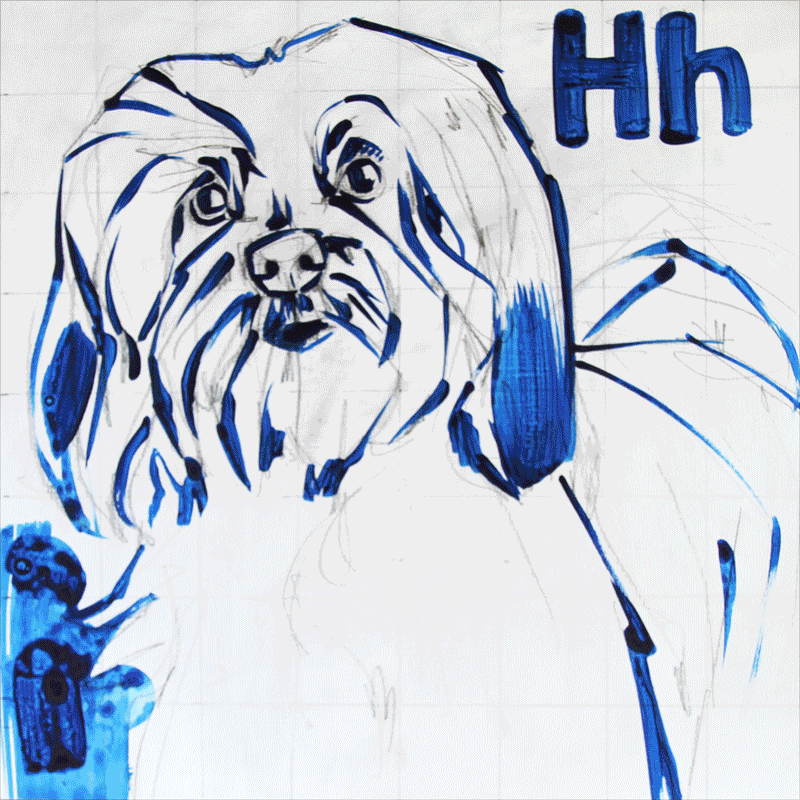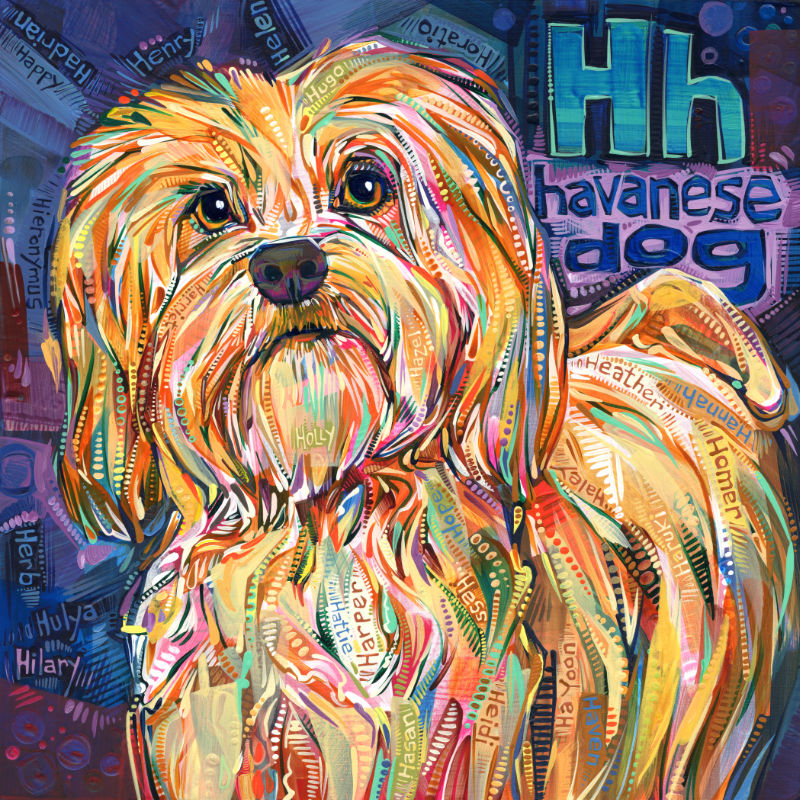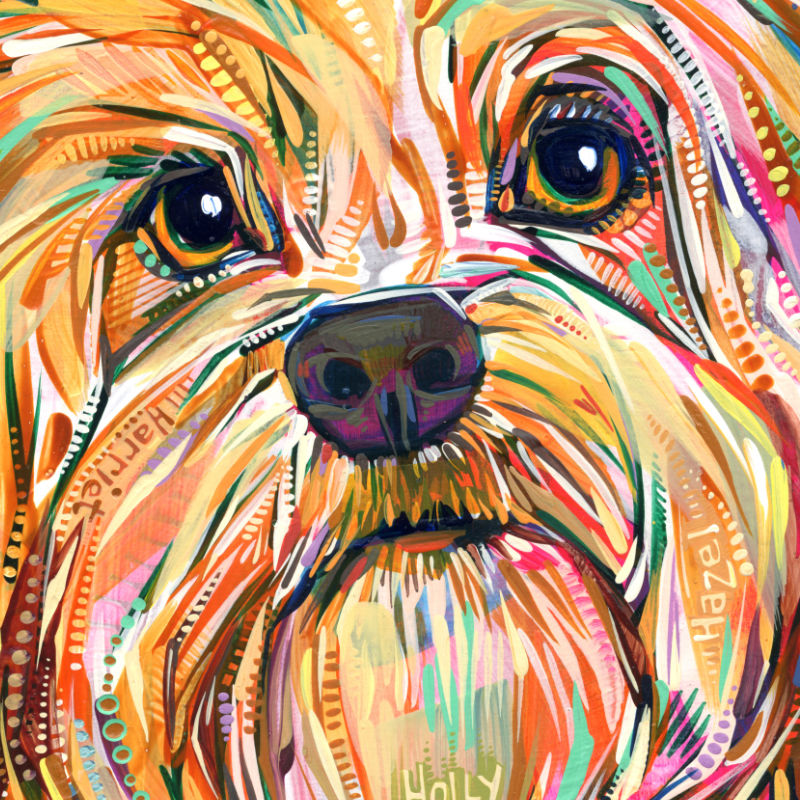Blog / 2020 / How to Love Your Art #1: Identify Art That You Find Boring
January 27, 2020
You don’t get to be a professional artist for almost 17 years without figuring out how to slay the monster of self-doubt. Leading up to my artiversary in May, I’m going to share everything I know about loving your art every day and with everything you’ve got.
The first step in building up the blessed certainty that your art is worthwhile is to hate a little bit on other people’s art.
Easy, right? Feelings of jealousy towards other creatives are normal, and they can help you in your artistic journey if you learn to harness them properly. Next time you’re having a negative reaction to someone else’s art, reflect on where it’s coming from. You’re looking for a pattern: you want to determine what genres, styles, media, or art movements make you want to go right to sleep.
For me, that happens to be fan art, celebrity portrait painting, hyperrealism, and any kind of painting that feels academic or traditional. To be clear, I don’t hate the artists who work in these genres or styles. I may not love what they create, but I will always champion their right to make art that satisfies their souls.
That said, when I’m having trouble in my studio, I seek out celebrity portraits and academic art to recenter myself. I know at my core that, whatever flaws my work may have, at least it isn’t as boring as that.

If this exercise makes you uncomfortable, please remember that people think your art is boring too!
I am certain that plenty of people find mine so, because some of them tell me. My work gets dismissed especially when I paint cats and dogs including this Havanese for my ABC book—the ire that art snobs reserve for pet portraiture is unreal!
Of course, this dog painting has also drawn an astonishing number of admirers as well. Even before it was finished—when it was just a speck in the background of a photo on the front page of my site (a photo which still lives in this post)—people were contacting me to compliment it.
H Is for Havanese Dog is the proof that people are going to have all kinds of opinions about your art, and that it’s okay. Using other people’s boring art to bolster yourself can transform the jealousy you feel around other artists’ successes into something beneficial, and, in the long run, that’s good for all of art-kind.

H Is for Havanese Dog
2019
acrylic on panel
14 x 14 inches
The first names embedded in this image are Ha Yoon, Hadrian, Hannah, Haley, Happy, Harper, Harriet, Haruki, Hasan, Hattie, Haven, Hazel, Heather, Heidi, Helen, Henry, Herb, Hess, Hieronymus, Hilary, Holly, Homer, Hope, Horatio, Hugo, and Hulya.
The original painting is for sale for $1500 plus shipping. If you want prints or other pretty items with this image, check out my Redbubble shop! The full book will be available later this year.
For more about how to love your art, check out these posts:
- Learn to appreciate other artists’ work.
- Talk about your art.
- Determine what parts of it make you happy.
- Figure out what worries you most.
- Decide on what’s right and wrong in your art.
- Play with your self-expression versus communication ratio.
- Document your work.
- Inventory your pieces.
- Give your art away.
- Charge a lot of money for your work.
- Take a break from your art now and again.
- Don’t claim the copyright on your work.
- Don’t let jerks near it.
- Introduce your art to all your favorite people.
- Celebrate your work.
- Define the word “love.”

Here’s what I’ve been reading since my last alphabet book update:
The Belles by Dhonielle Clayton
This bit of YA fantasy is bizarre, hard, and so good. I devoured this book as soon as it came out in early 2018, and I just reread it in preparation for enjoying its sequel.
The Everlasting Rose by Dhonielle Clayton
The follow-up to Clayton’s Belles was satisfying both in that it answered some of my questions about the strange world the author created in her first book and in that it left me with new ones.
The Book Woman of Troublesome Creek by Kim Michele Richardson
This novel brings together so many things that are important to me: the power of libraries, feminism, and workers organizing. I also love that it tells the story of a colorful American genetic anomaly and what it meant for the people who had it.
Eloquent Rage by Brittney Cooper
Cooper defines feminism as loving women and acknowledges that it’s inherently queer. For that reason alone, I’d recommend this book, but there’s plenty more nourishing critical commentary in this memoir/manifesto. This is a must-read, especially for white women who want to better understand the racism that underlies so much of white feminism.
Give and Take by Adam Grant
I read this book when it first came out in 2013 and loved it because, though it’s about how generosity can help you succeed in general, I saw it first and foremost as a cogent argument for uncopyrighting. In the intervening years, my tolerance for the patriarchy has faded. While I still love the thesis of the book, I was repelled by Grant’s pathological passion for citing men or stories about men to support almost all his points. I only made it half way through the book this time.
Maybe this post made you think of something you want to share with me? Or perhaps you have a question about my art? I’d love to hear from you!
To receive an email every time I publish a new article or video, sign up for my special mailing list.
If you enjoyed this post, Ko-fi allows you to donate. Every dollar you give is worth a bajillion to me!



